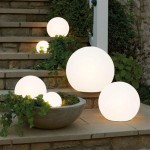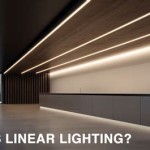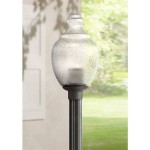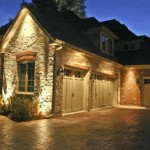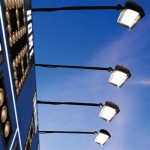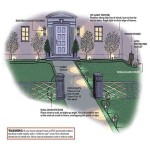Outdoor Wall Lighting Electrical Box: A Comprehensive Guide
Outdoor wall lighting plays a crucial role in enhancing the curb appeal and safety of any property. From illuminating walkways and entrances to adding a touch of elegance to architectural features, these fixtures often require a dedicated electrical box for proper installation and power supply. Understanding the purpose and features of outdoor wall lighting electrical boxes is essential for homeowners and electricians alike. This guide will provide a comprehensive overview, covering installation considerations, types of boxes, essential components, and safety guidelines.
Purpose and Importance of Outdoor Wall Lighting Electrical Boxes
Outdoor wall lighting electrical boxes serve as the central hub for connecting electrical wires and providing a secure housing for the junction of electrical components. They are specifically designed to withstand the elements and provide protection against moisture, dust, and debris. The primary functions of these boxes include:
- Providing a secure and weatherproof housing for electrical connections: Outdoor boxes are constructed from weather-resistant materials, such as plastic or metal, with seals and gaskets to prevent moisture ingress. This ensures the safety and longevity of the electrical wiring.
- Facilitating proper wiring and installation: The boxes offer a designated space for connecting wires and mounting fixtures, simplifying the installation process and reducing potential electrical hazards.
- Protecting electrical components from environmental factors: Outdoor boxes shield the wiring and junction boxes from harsh weather conditions, such as rain, snow, and extreme temperatures, preserving the integrity of the electrical system.
- Ensuring code compliance: Electrical codes often mandate specific requirements for outdoor electrical installations, including the use of approved boxes and proper wiring techniques. Adhering to these codes ensures a safe and reliable electrical system.
Types of Outdoor Wall Lighting Electrical Boxes
Outdoor wall lighting electrical boxes come in various sizes and configurations, each suited to specific applications. Some common types include:
1. Weatherproof Junction Boxes
These boxes are typically made of plastic or metal and feature a weatherproof seal to prevent moisture from entering. They are commonly used for connecting wires and providing a junction point for multiple electrical circuits. Weatherproof junction boxes are available in different sizes and can accommodate various numbers of wires and electrical components.
2. Recessed Boxes
Recessed boxes are designed to be installed flush with the wall surface, creating a clean and unobtrusive finish. They are ideal for applications where the box needs to be concealed behind the fixture. Recessed boxes often require a special mounting bracket or a wall-mounted box adapter for installation.
3. Surface-Mount Boxes
Surface-mount boxes are attached to the wall surface using screws or mounting brackets. They are suitable for applications where the box needs to be easily accessible for wiring or repairs. Surface-mount boxes are available in a range of sizes and configurations, including single-gang and double-gang boxes.
4. Combination Boxes
Combination boxes combine the features of both recessed and surface-mount boxes, offering a versatile solution for various applications. These boxes can be installed either recessed or surface-mounted, depending on the installation requirements.
Essential Components of an Outdoor Wall Lighting Electrical Box
Outdoor wall lighting electrical boxes typically contain several essential components, each playing a crucial role in the electrical system. These components include:
1. Electrical Wires
Electrical wires carry the power supply to the lighting fixture. The type and size of wire used depend on the electrical load and the distance to the power source. Outdoor lighting installations often require weatherproof cable, typically with a PVC or nylon jacket, to protect against moisture and abrasion.
2. Junction Box
The junction box is the central location where electrical wires are connected and terminated. It provides a secure and organized space for wire connections and ensures proper electrical grounding. Junction boxes are available in various sizes and materials, depending on the application.
3. Grounding Wire
A grounding wire provides a safety path for electrical current in case of a fault. It is typically connected to the electrical box and grounded to the earth, ensuring that any stray current is safely channeled to the ground.
4. Electrical Connectors
Electrical connectors, such as wire nuts or wire connectors, are used to securely connect wires to the junction box and the lighting fixture. They ensure that the connections are tight and reliable, preventing loose connections that can cause electrical hazards.
5. Mounting Hardware
Mounting hardware, including screws, brackets, and anchors, secure the electrical box to the wall or mounting surface. The type and size of hardware used will vary depending on the wall material and the size and weight of the electrical box.

Surface Mount Junction Box For Exterior Light Greenbuildingadvisor

How To Install An Exterior Electrical Box For A Light Fixture On The Wood Siding

Jual Ip66 Waterproof Socket Weatherproof Switch Light Outdoor Wall Power Kab Sleman Wasa Tokopedia

How To Turn An Outdoor Light Fixture Into Indoor Industrial Modern Wall Sconce Curbly

How To Install A Porch Light Exterior Fixtures Lighting

Dusk To Dawn Outdoor Porch Lights With Gfci Built In Sensor Waterproof Light Fixture Anti Rust Exterior Wall Mount For House Garage Com

Outdoor 3w Led Wall Lamp Step Stair Night Light Fixture Waterproof Junction Box

Sigma Engineered Solutions Metal Weatherproof New Work Round Electrical Box In The Boxes Department At Com

How To Install Outdoor Lighting And Diy Family Handyman

3w Led Outdoor Wall Light Fixture Step Stair Lamp Junction Box Dusk To Dawn Ir
